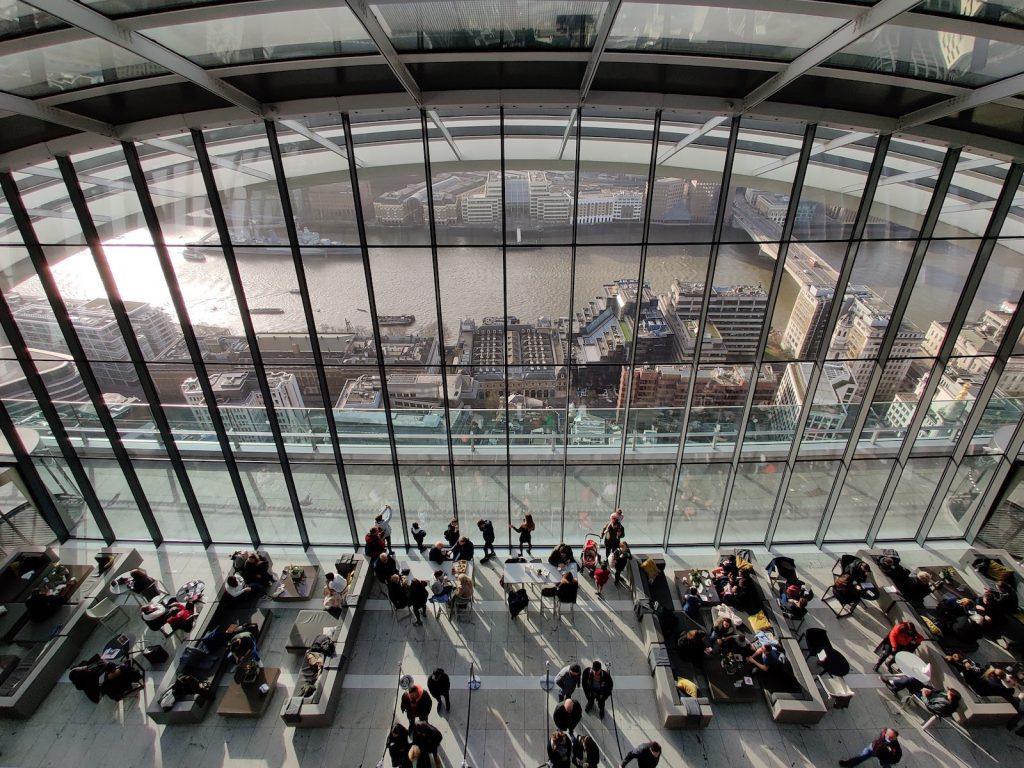
Sustainability in buildings is about creating healthier, more efficient and environmentally friendly spaces, through the integration of green strategies such as energy efficiency, reducing wastage and indoor air quality improvements. These strategies improve the comfort of occupants while reducing energy consumption and environmental impact. By focusing on sustainability measures, we can ensure that our built environment is sustainable, healthy and efficient. Sustainable buildings create healthier living spaces, reduce energy consumption and environmental impact and contribute to a greener future.
Why is sustainability important?
We are in the middle of a global energy crisis and across the world, energy saving regulations are being prioritized. Buildings are responsible for 30 per cent of greenhouse emissions and 40 per cent global energy consumption*, with HVAC and lighting contributing to a major portion (over 60 per cent**) of energy consumed in commercial buildings. Energy conservation and sustainable operations are now a top priority for enterprises. In fact, interviews conducted with 3,000 CEOs worldwide, revealed that 51 per cent of them now rank sustainability as their greatest organizational challenge.
Your wireless infrastructure can drive sustainability
That’s right. Your wireless infrastructure (Catalyst, Meraki), together with Cisco Spaces, can drive sustainability by providing the visibility and data insights that you need to act on your sustainability goals. Your Cisco hardware can act as sensors for occupancy, air quality, temperature, humidity and more. The data and insights you gain, through Cisco Spaces, can be used to answer crucial questions about the sustainability of your buildings and in turn help you identify and optimize energy inefficiencies by making informed decisions. You can create safer, smarter and more sustainable buildings by:
- Optimizing energy consumption based on actual occupancy and utilization data
- Making your day-to-day operations more sustainable
- Right-sizing your real estate portfolio, thereby reducing real estate costs and overall carbon footprint
1. Energy Optimization
Adjust heating, ventilation, air conditioning (HVAC), and lighting operations, to adapt to actual occupancy of buildings and floors. Building operators generally manage HVAC operations through trial-and-error adjustments, programmed based on an assumption of when the building is occupied. Dynamically adjusting HVAC levels based on actual occupancy, can result in significant energy savings. Real-time data can be compared with historical and organizational averages to help with decision making.
2. Sustainable Operations
Conserve and use resources efficiently, reduce wastage, operational costs and align with sustainability programs, by dynamically planning facilities services around actual usage and occupancy. Use Cisco Spaces Apps to visualize real-time occupancy in a specific building or floor and receive alerts when a threshold is met, to trigger dynamic cleaning or other facilities services. This can help you…
* Drive focussed cleaning services based on real-time occupancy and usage, rather than pre-set schedules.
* Optimize catering decisions to reduce food wastage.
* Enable informed decision-making on budgets and allocation of resources.
* Take data-driven staffing decisions.
3. Reduce Real-Estate Cost & Carbon Footprint
A commercial building uses an average of 22.5 Kwh per year, per square foot. Depending on the size of the building, that can add up to a lot. One can consolidate and reconfigure real estate based on usage data, thereby reducing real estate costs and carbon footprint. Cisco Spaces can give you an overview of occupancy across buildings in your portfolio. The data can be used to analyze historic patterns and identify areas with the lowest density. This in turn can help in decision making to reduce the amount of unused or improperly used space.
For more information on how Cisco Spaces can turn your buildings into smart and sustainable spaces, read our e-book
* World Economic Forum, 2021. ** U.S. Energy Information Administration via Madison Gas and Electric Company’s Managing Energy Costs in Office Buildings research report



